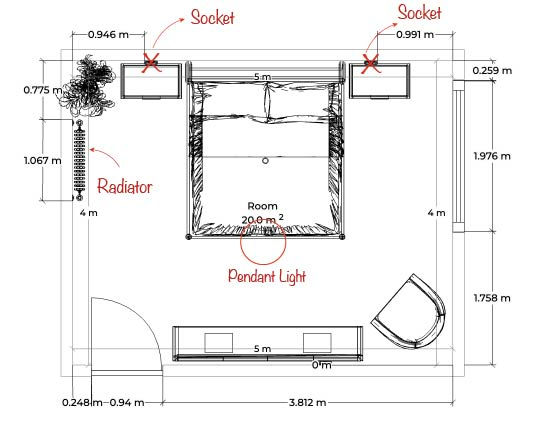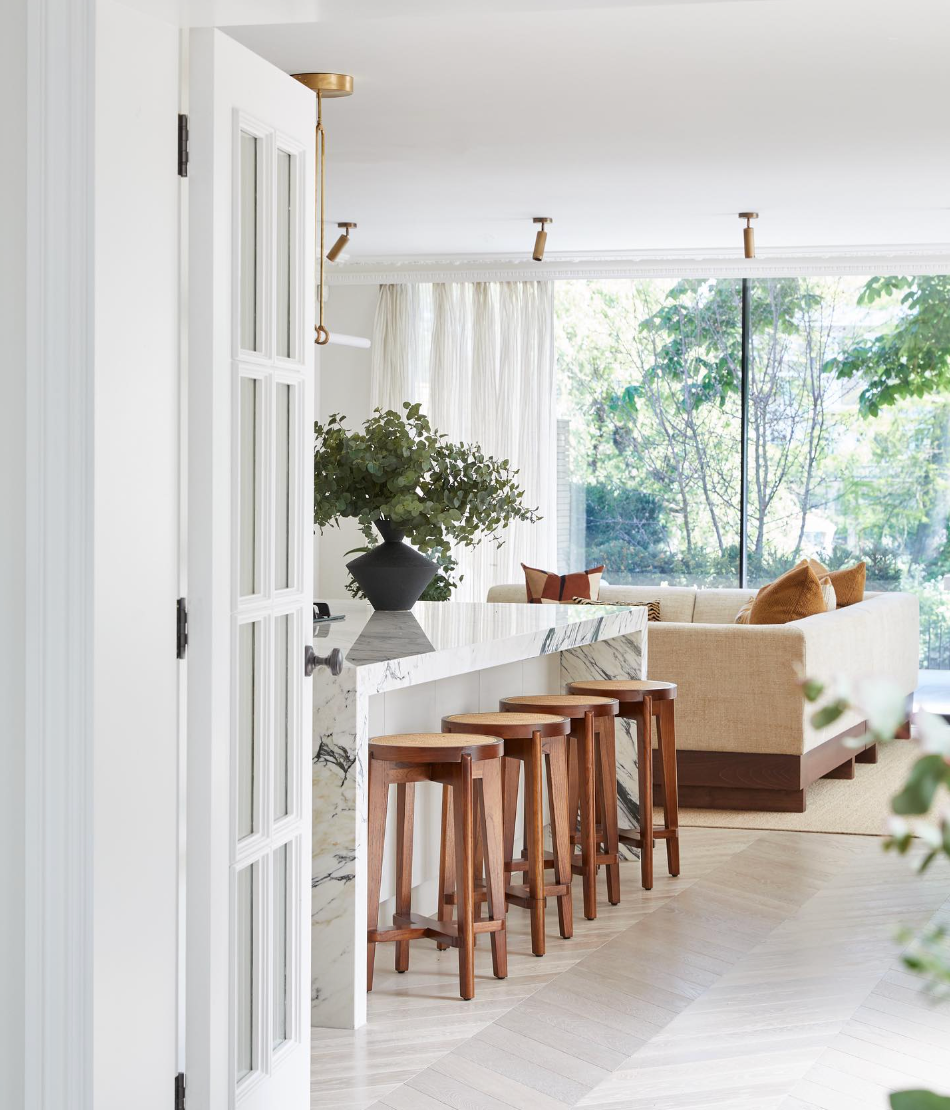
Credits: De Rosee SA)
Have you ever walked into a beautifully designed room and wondered how it all came together so effortlessly? The answer lies in the world of interior design. Whether you're moving into a new house or looking to revamp your current space, interior design plays a crucial role in transforming a house into a home that reflects your unique style and personality. In this ultimate guide to interior design, we will explore the fundamental principles, expert tips, and creative ideas that will help you create your dream home. So, let's dive in and unlock the secrets of interior design!
1.Understanding Your Style
Before embarking on your interior design journey, it's essential to understand your personal style. Your home should be a reflection of your personality and the things you love. Are you drawn to sleek and modern aesthetics, or do you prefer a more traditional and timeless look? Maybe you're intrigued by the rustic charm of farmhouse interiors or the eclectic mix of bohemian designs. Take some time to explore different design styles and create a mood board or a Pinterest board that captures your preferences. This will serve as a guiding light as you make decisions about colours, furniture, and decor.
2.Creating a Functional Floor Plan

One of the key aspects of interior design is creating a functional floor plan that optimises the use of space in your home. Start by analyzing the layout of each room and considering the activities that will take place in them. For instance, the living room should be arranged to encourage conversation and relaxation, while the kitchen needs to be efficient and practical for cooking and meal preparation. Consider traffic flow and ensure that there is enough space to move around comfortably. If you're unsure about space planning, consulting with an interior designer can be immensely helpful in maximising the potential of your home.
3.The Power of Colour

(Credits: Eleanor Horwell Design)
Colour has the ability to transform a room and evoke different emotions. Understanding the psychology of colour can help you create the desired atmosphere in each space. For example, warm tones like red and orange can add a sense of energy and vibrancy, while cool hues such as blue and green promote calmness and relaxation. Neutrals like white, beige, and grey provide a versatile backdrop and can be paired with accent colours to create a focal point. Experiment with different colour combinations and consider the impact they will have on the overall mood of the room.
4.Choosing the Right Furniture
Furniture is not only functional but also contributes to the overall aesthetics of your home. When selecting furniture, consider the scale and proportion of the room. Oversized furniture in a small space can make it feel cramped, while small furniture in a large room can create an unbalanced look. Invest in pieces that are not only visually appealing but also comfortable and durable. Remember, furniture is a long-term investment, so opt for quality pieces that will stand the test of time.
5.The Art of Lighting

(Credits: HK Living)
Lighting is an often overlooked but crucial element in interior design. It has the power to set the mood, highlight architectural features, and enhance the overall ambiance of a room. Incorporate a mix of ambient, task, and accent lighting to create layers of illumination. Use dimmers to control the intensity of light and create different atmospheres for various occasions. Additionally, consider natural light sources and maximise their potential by using light-coloured curtains or blinds that allow light to filter through.
6.Accessorising with Décor

(Credits: Heidi Woodman Interiors)
The final touches of interior design come in the form of decor and accessories. These elements add personality and character to your home, showcasing your unique style. Decorative items such as artwork, mirrors, rugs, and plants can breathe life into a space and tie everything together. Don't be afraid to mix and match textures, patterns, and materials to create visual interest. Remember , remember that less is often more when it comes to accessorising. Choose a few statement pieces that truly resonate with you rather than cluttering the space with too many knick-knacks.
7.Bringing the Outdoors In

(.Credits: PINEAPPLE INTERIORS)
Nature has a way of bringing a sense of calm and serenity to any space. Incorporating natural elements into your home can create a harmonious and inviting atmosphere. Consider introducing indoor plants to add a touch of greenery and purify the air. You can also use natural materials such as wood, stone, or rattan in your furniture and decor to create an organic and earthy feel. Large windows and strategically placed mirrors can help maximise views of the outdoors and bring in an abundance of natural light.
8.Staying on Budget
Interior design doesn't have to break the bank. With careful planning and resourcefulness, you can create a stunning home on a budget. Start by prioritising your spending and allocating a budget for each aspect of your design project. Consider DIY projects or upcycling furniture to give them a fresh new look. Shop around for sales, explore thrift stores or online marketplaces for unique and affordable pieces. Remember that creating a beautiful home is not solely dependent on the price tag but rather on the creativity and thoughtfulness put into the design.
9.Seeking Professional Help
While it's possible to embark on an interior design journey on your own, sometimes it's beneficial to seek the expertise of a professional. Interior designers possess the knowledge and experience to bring your vision to life, save you time and potentially money, and offer valuable insights and suggestions. They have access to a wide range of resources and can help you navigate the world of design, from selecting materials and finishes to coordinating contractors and managing timelines. If you feel overwhelmed or unsure about certain aspects of your project, don't hesitate to reach out to a qualified interior designer.
Conclusion
Creating your dream home is an exciting and rewarding endeavour. By understanding your style, creating a functional floor plan, choosing the right colours, furniture, and lighting, and incorporating personal touches through decor and natural elements, you can transform your house into a space that truly reflects your personality and brings you joy. Remember, interior design is a journey of self-expression and creativity. Enjoy the process, trust your instincts, and let your imagination run wild. Your dream home awaits!
コメント